TU-144. Was the battle for supersonic lost?
Exactly 35 years ago, the aircraft was taken out of continuous operation, which became the pride of our aviation industry, the Tu-144. The first in the world (there were only two of them, along with the "Concord") supersonic passenger aircraft. AT history sunk another battle of the USSR and the capitalist world.
It seems that the battle was lost outright. Tu-144 during the operation made 102 commercial flights, of which 55 passenger. A total of 144 passengers were transported by Tu-3284, which is civilian aviationthat on the scale of the USSR, that on a global scale, in general, about nothing. For comparison: the main competitor of the Tu-144 - Concord - has transported more than 2,5 million people during its operation.
But in any story there are nuances. About them and it is worth talking.
The end of 60-x - the beginning of 70-ies of the last century were marked by an unprecedented flourishing of air traffic and civil aviation around the world. At the same time, the idea of using supersonic machines for long-distance flights arose in Europe and the USSR. In the first case, high speeds were needed in order to reduce the time of crossing the Atlantic between Europe and the United States, in the second, the vast expanses of the Soviet country played a decisive role, and it was also desirable to overcome them as quickly as possible.
As a result, in Europe and the USSR almost simultaneously began to develop unique supersonic airliners that are conceptually similar, but structurally noticeably different from each other: Concord and Tu-144.
Experts to this day argue about whether there were "borrowing" ideas, technologies and design solutions when creating these two unique aircraft. The French in their time very fiercely tried to prove that the TU-144 was “ripped off” from the “Concord”, but all attempts ended in nothing. Machines really were different.
Of course, the aircraft developers, as they say, looked towards their competitors, but primarily proceeded from their own technical and technological capabilities. And in the USSR, in contrast to the French, who created the Concord from scratch, they had something to rely on.
It is believed that all promising samples of Soviet (and Russian) civilian technology, from trucks to supersonic aircraft, are based on whether or not military models have taken place. And Tu-144 is no exception.
The creation of a supersonic passenger aircraft was a "multi-way" process; its developments here were represented by the Tupolev, Sukhoi and Myasishchev Design Bureau, which at that time had not only theoretical developments in the field of creating large supersonic aircraft. And in the Tu-144, if desired, it was possible to find separate nodes and schemes from M-50, T-4 and Tu-135.
Most of all, of course, the Tu-144 took from the unrealized project of the Tu-135 bomber and its passenger version Tu-135. But there was no real military analogue of the flying Tu-144.
One way or another, supersonic airplanes, including heavy ones, were already created in the 1950s. Therefore, there were not too many exceptional ideas in the project. Tu-144 has absorbed a lot of what was invented by the military. And we knew how to build military aircraft and build them. Fact.
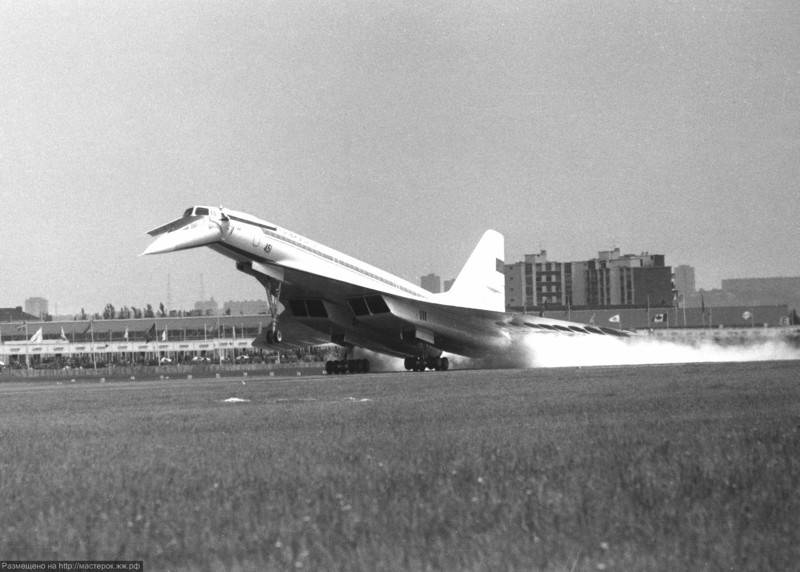
[center] Takeoff of the first Tu-144 from the VASO airfield.
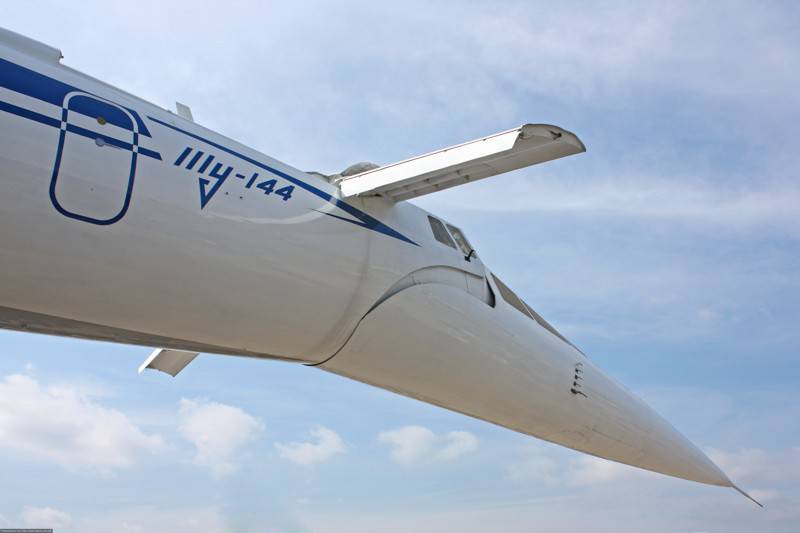 [/ Center]
[/ Center]The main problem for aircraft manufacturers was that the supersonic will be the strongest surface heating. And this problem needs to be solved not in relation to a small plane or a bomber with a small crew, but to a huge passenger liner. Which not only must fly at great speed over long distances, but also provide the necessary comfort for passengers.
Since I live in the city where all the Tu-144 were born, then finding the person who took part in assembling and covering it was almost not difficult. I managed to talk with Irina Fedorovna Vyakhireva, who in those years worked for VASO as an electrical engineer. And several times participated in test flights, controlling dozens of kilometers of wiring and hundreds of aircraft servomotors. Including when flying on supersonic.
So, according to the memoirs of Irina Fyodorovna, the noise during the flight was just terrible, especially in the tail section. We had to yell at each other's ears, without exaggeration. The noise from the engines in the tail section of the aircraft in the middle was compensated by the howling of the engine cooling system motors. And these problems were solved, starting with the first flight of the Tu-144, and it can be said that they were finally resolved.
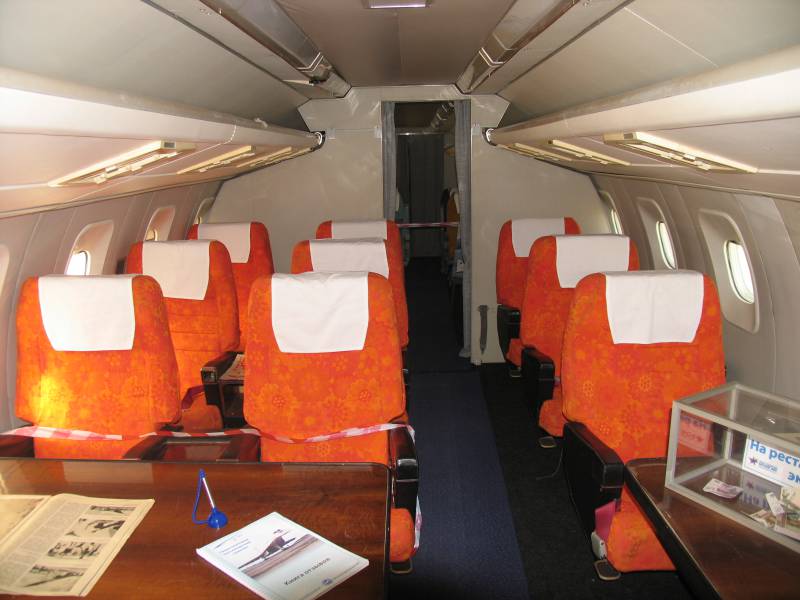 [/ Center]
[/ Center]There were also more serious questions of controllability in the entire speed range, as well as balancing the liner. So on the Tu-144 appeared front wings, which were used in take-off and landing modes. A deflectable nose fairing was implemented, which improved visibility from the cockpit during takeoff and landing. Many new developments have been applied in the ACS, which provides automation of basic procedures. In any case, the Tu-144 was for the USSR an outstanding achievement in terms of technology, materials, avionics, control systems.
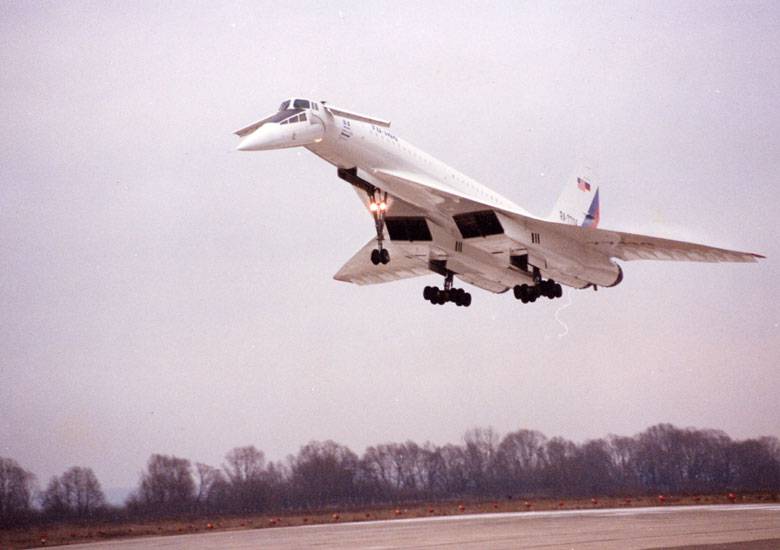
It is a pity, but the Tu-144 was not destined to become a real conqueror of distances. The reason for this was the eternal headache of our aircraft industry: the engine.
The first version of the Tu-144 with the NK-144А engines did not satisfy the Aeroflot in terms of flight range at all - it could be operated on lines up to 4000 km long.
Therefore, the Tu-144 was used only on one regular line: Moscow — Alma-Ata. But here, too, the aircraft lacked fuel “from the threshold to the threshold”. The trouble was that if for some reason the airport of Alma-Ata could not take on board, Tashkent remained the only alternate airfield capable of receiving the Tu-144. In case of closing due to weather conditions and it was simply nowhere to land an aircraft with passengers. It is not surprising that the pilots themselves compared the flights on the Tu-144 with a “kiss with a tiger”. And every Tu-144 flight to Almaty and back turned into one continuous stress for crews, dispatching services and aviation officials.
The first hit, the T-144, received the 3 June 1973, at the Le Bourget Air Show. A very strange and tragic flight, never fully investigated.
After performing a demonstration flight at low altitude and low speed, with the landing gear released and the front wing of the Tu-144 landing.
What happens next does not fit into the canons of common sense: in some two hundred meters above the ground, a strained howl of forced engines is heard, and the plane soars upwards with a candle, removing the landing gear and front wings on the move. When the altitude reaches the order of 1200 meters, it goes into a horizontal flight for a fraction of a second and ... falls into a sharp dive. Four seconds later, at a height of 750 meters, the Tu-144 tries to get out of the peak and even release the front wings.
As it turns out later, the overload has now reached the value in 4 − 4,5 units. The attempt to level the car continued for another four seconds. On the 5 second after starting to pull out of a dive at an altitude of 280 meters at a speed of 780 km / h, the left front wing does not withstand the load. Solid-sized construction is separated from the fuselage and hits the main wing, punching the fuel tank. Mortally wounded car spins to the left, enormous overloads begin to tear the plane apart into the air.
Flames engulfed in flames fell on the nearby village of Hussenville, completely destroying five buildings and killing eight people. Another 25 people from those on the ground were seriously injured.
The crew of the aircraft composed of Mikhail Kozlov (commander), Valery Molchanov (2 th pilot), Vladimir Benderov (test manager), Anatoly Dralin (flight engineer), George Bazhenov (navigator), Boris Pervukhina (lead test engineer) died completely.
The investigation conducted by the joint Soviet-French commission lasted more than a year, but it was not possible to determine the exact cause of the catastrophe. The commission found that all aircraft systems were operating normally. The only reason for the catastrophe, according to members of the commission, could have been the crew’s attempt to divert the plane from the alleged collision with the French reconnaissance aircraft Mirage III R, from which the photographic and filming of the Tu-144 was taken.
The trajectories of the Tu-144 and Mirage did not intersect. Aircraft moved in the same direction and at different heights. However, according to the findings of the commission, the Soviet crew, not being able to visually assess the direction of the Mirage’s flight, could have taken a sharp evasive maneuver. At the same time, the test manager who was standing in the cockpit of the Tu-144 with the movie camera, without being fastened, could fall and block the pilot's actions.
"Sharp maneuver" performed by 200-ton machine ... Hmmm ...
Nevertheless, work on the Tu-144 continued. The new modification of the engine allowed to increase the range of the liner. Tu-144D was almost ready for operation on long-haul lines.
However, 23 May 1978, a new crash occurred Tu-144D. And not a prototype, and the aircraft intended for transfer to the line Moscow - Khabarovsk. During the flight, fuel ignited in the area of the 3 engine due to the destruction of the fuel line. The crew was forced to make an emergency landing on the field near Yegoryevsk near Moscow. A fire started. The crew commander, co-pilot and navigator left the plane through the pane of the cockpit. Two aboard the engineer got out through the front exit door. Two of their colleagues were less fortunate - being clamped in their seats when the plane fell, they could not get out of the plane and died in the fire.
31 July 1980 of the year during the next test flight of the aircraft with the 77113 tail number in a supersonic mode at the height of 16 000 meters, one of the engines was destroyed. The crew managed with great difficulty to get the car out of a dive and land.
The leadership of the country really wanted to start commercial operation of the Tu-XNUMHD, since the prestige of the USSR as an advanced aviation power was at stake. Especially in light of the fact that "Concord" firmly settled on flights across the Atlantic.
The last attempt to put the Tu-144D on the line was made at the end of the 1981 year. The plane was supposed to start flights on the route Moscow-Krasnoyarsk. But ... The next destruction of the engines during ground tests, and regular flights had to be postponed. Forever and ever.
And after the death of Brezhnev, the attitude to the Tu-144 changed dramatically. Aeroflot tried with all its might to get rid of the plane, which, except for a headache, had nothing. As a result, the Tu-144D was removed from passenger flights with an official conclusion about “a bad impact on people's health when crossing the sound barrier.”
And yet, the Tu-144 is not "leaked" completely. Located on the VASO stocks in Voronezh, 4 from 5 aircraft was completed. The further fate of these aircraft is unique, and will allow me to put a rather optimistic end in the end.
The base of the Tu-144 was the airfield in Zhukovsky, where the planes were not just based, but even periodically flew. Tu-XNUMHD used to deliver urgent cargo and correspondence, as well as flying laboratories.
The joint Roscosmos and NASA program involved a modified Tu-144 with a 77114 tail number, called Tu-144LL (Flying Laboratory). The main goal of the research was the development of a plan for creating a supersonic passenger aircraft of the 21st century. When NASA was "played enough", in 1999, the research was discontinued.
Today, all the remaining Tu-144 (8 units) are in storage, or as museum exhibits. Only copies of Zhukovsky Tu-144 No. 77115, which is exhibited at MAKS and Tu-144LL No. 77114, can be brought to flight status.
It would seem that all history is over. And it is not over in favor of the Tu-144, who lost the fight against the Concorde, which flew longer and farther, and carried a significant number of passengers. Yes, commercially, Concord won.
However, work to improve the Tu-144, and in particular the projects Tu-144K and Tu-144KP, allowed us to do what we have today.
The border was the same year 1981. The year when the non-ascending star Tu-144 rolled. But it was this year, December 18, made the first flight of the sample "70-01". Test pilot Boris Veremey lifted into the air the first sample of what later became the "White Swan", Tu-160.
The basis for the Tu-160 was precisely the Tu-144 and work carried out in the history of this aircraft.
Yes, the Tu-144 was an innovative aircraft. Engineers were not ready for its appearance, there were a lot of difficulties with ground infrastructure. But the Concorde, which won the Tu-144 commercial competition, is now in history, and it is unlikely that it will have at least some continuation. But the Tu-160, which absorbed a lot from the Tu-144, still carries out its service to protect our peace and security. And still has no analogues.
And for some reason, the developers and creators of "Concord" did not even try to repeat what the "Tupolevtsy" did, going from Tu-144KP to Tu-160. Do not, because it will not bring benefits? Maybe.
In any case, the question of whether or not we lost the battle for supersonic for large aircraft is not as straightforward as it seems at first glance. A glance at the numbers of passengers carried and money earned.
And really, who won? Large planes capable of flying at supersonic speeds are now only in Russia ...
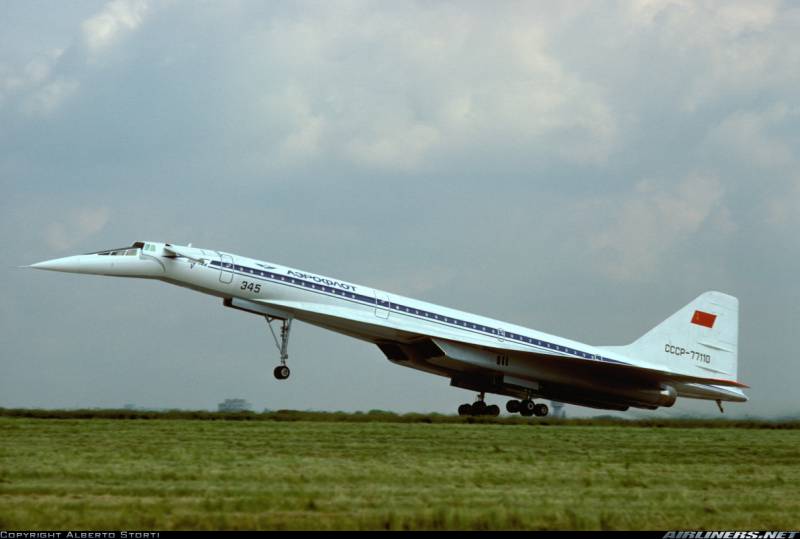
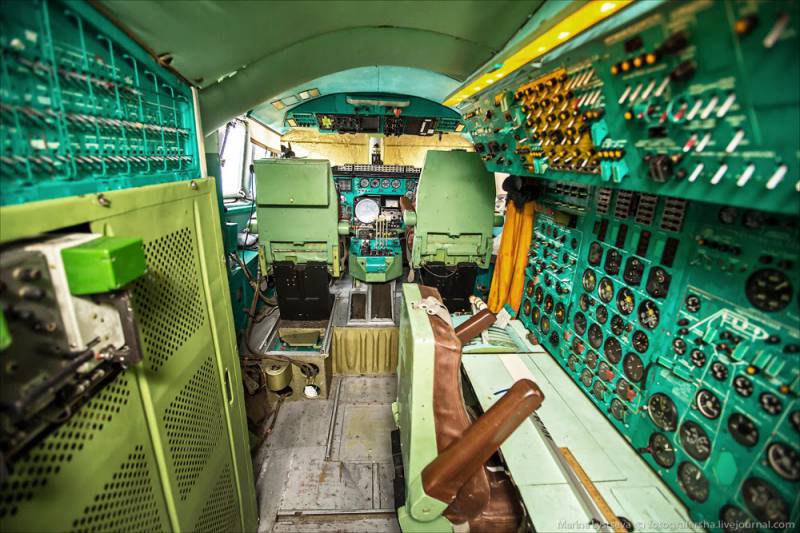
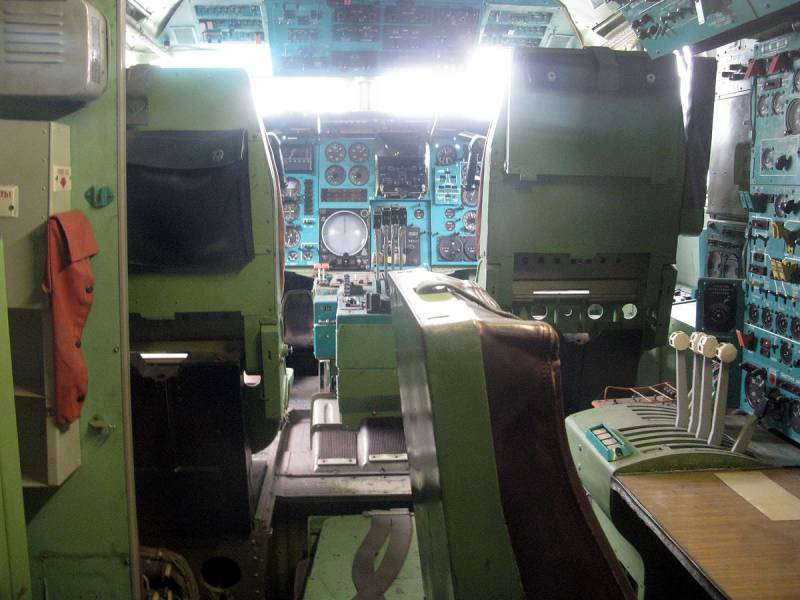
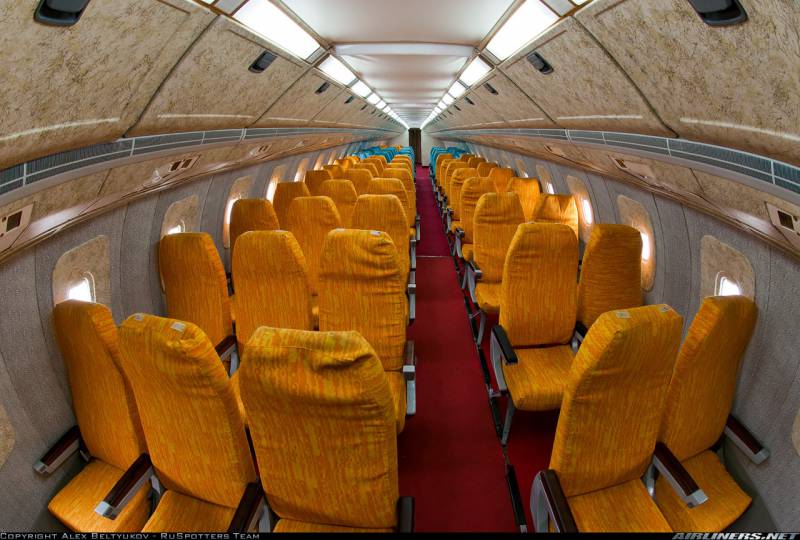
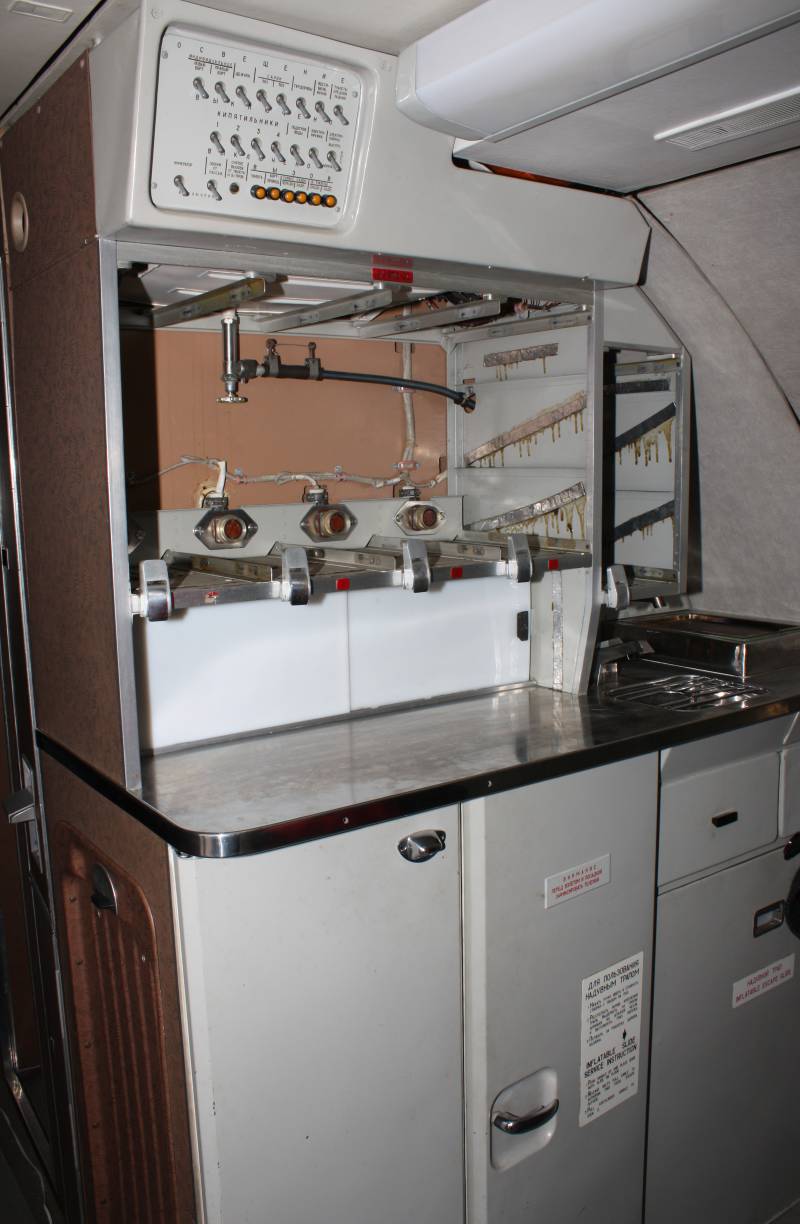
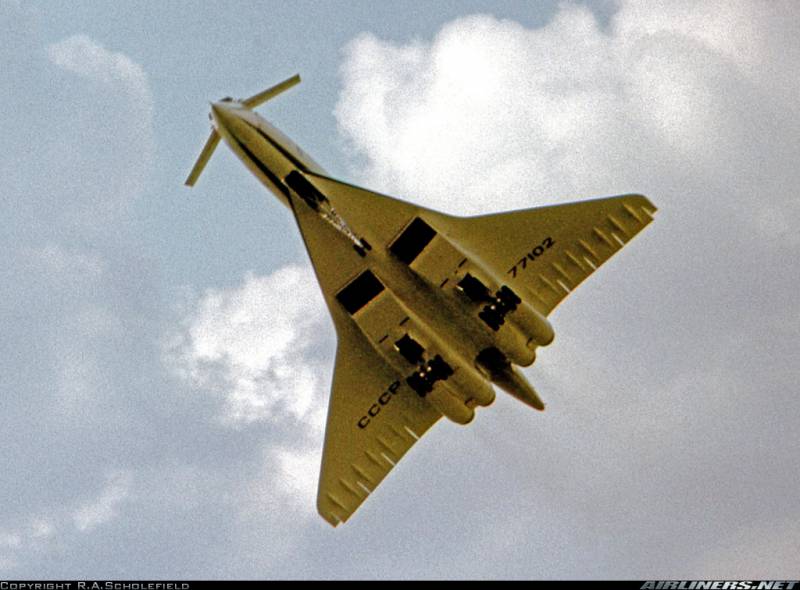
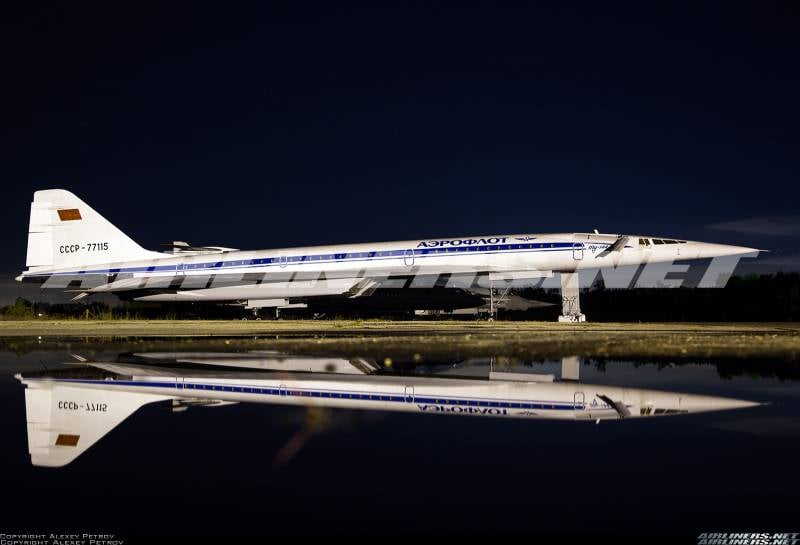
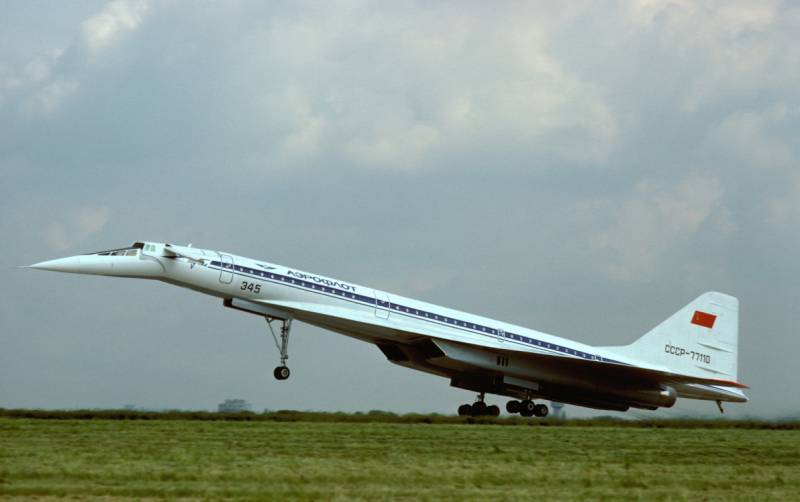
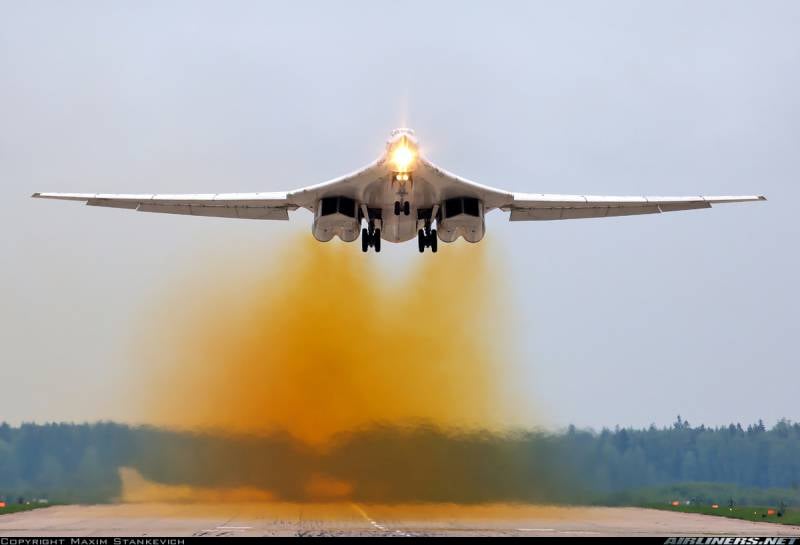
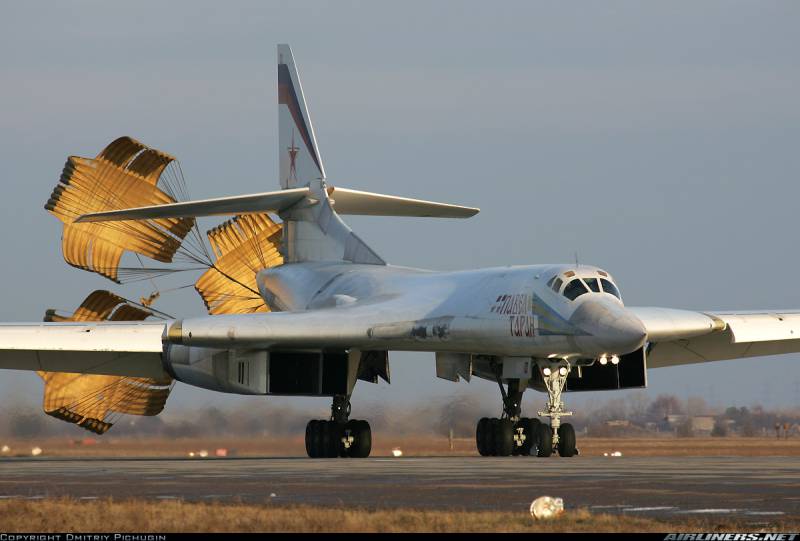
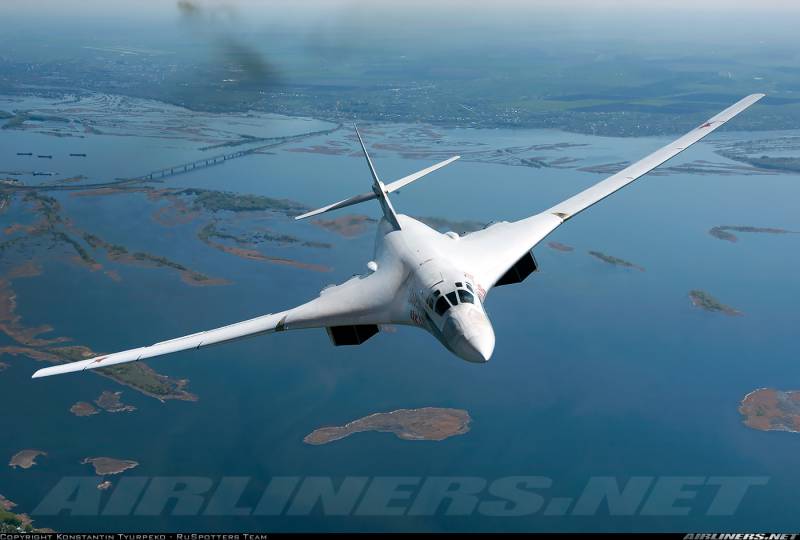
Information